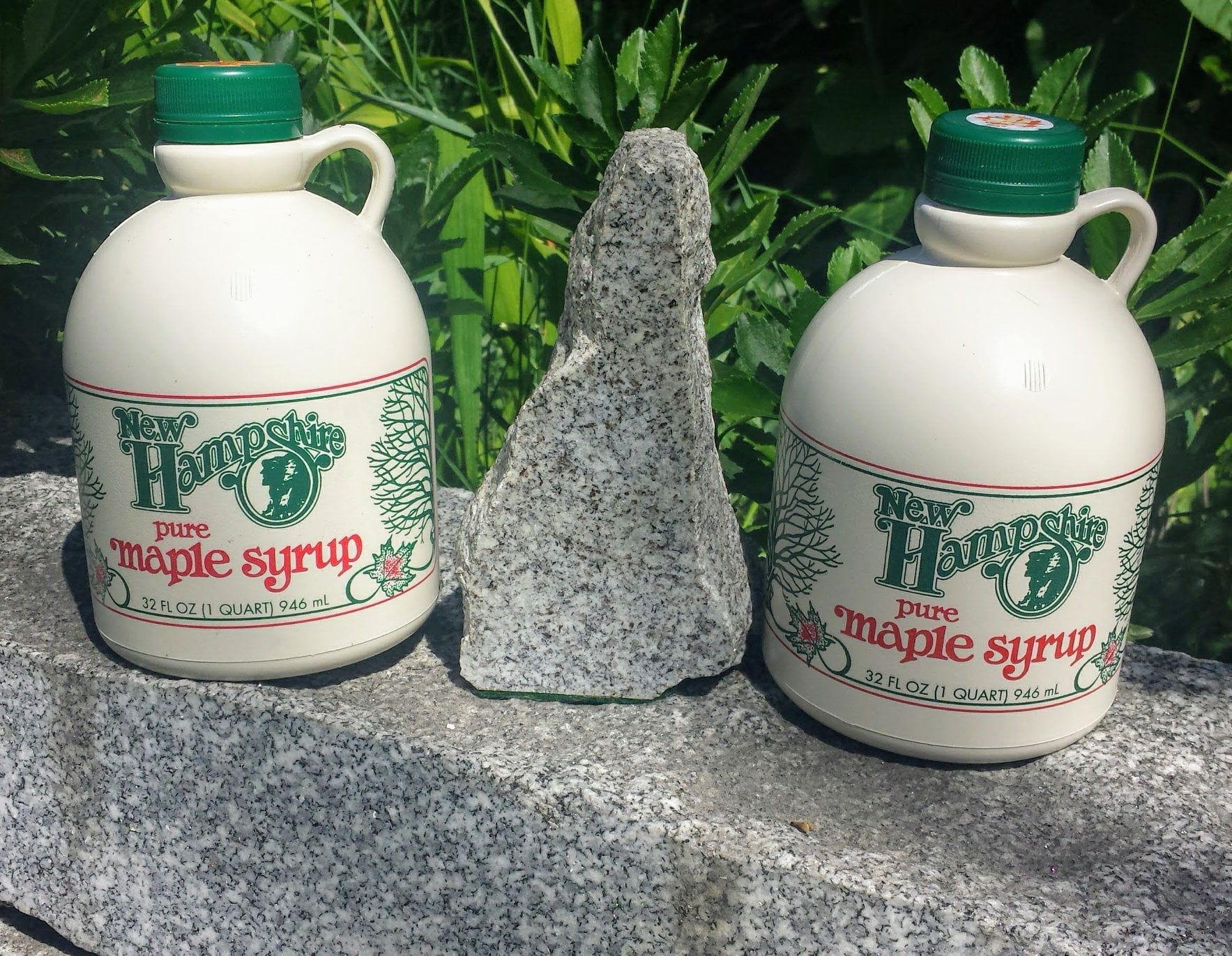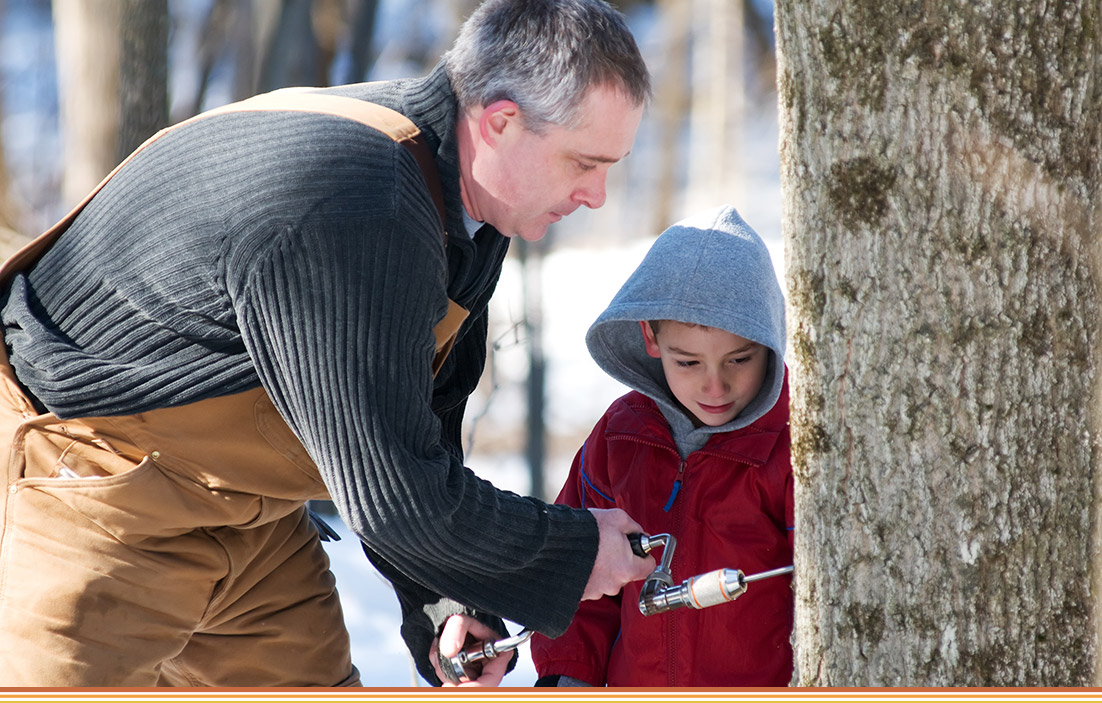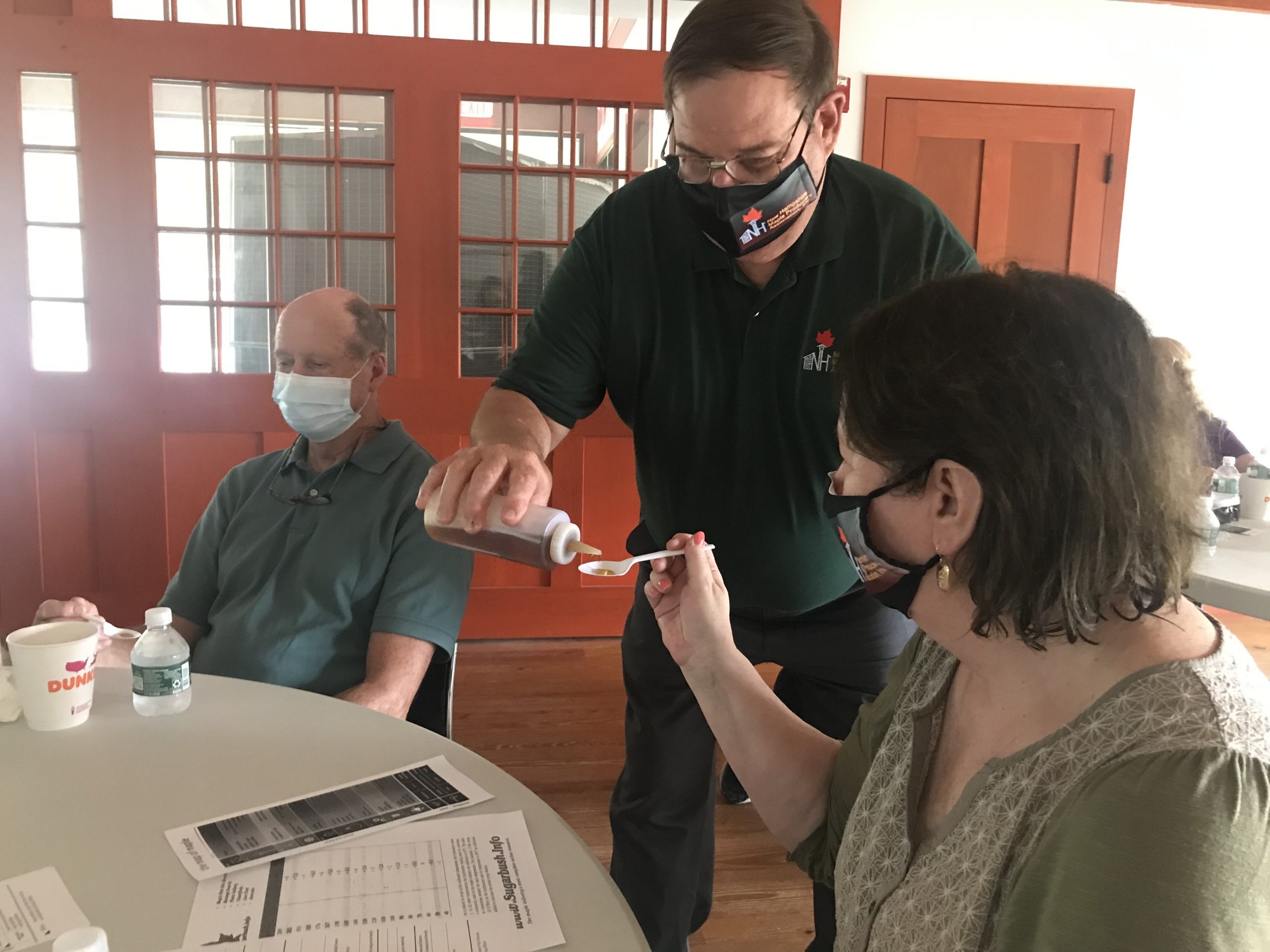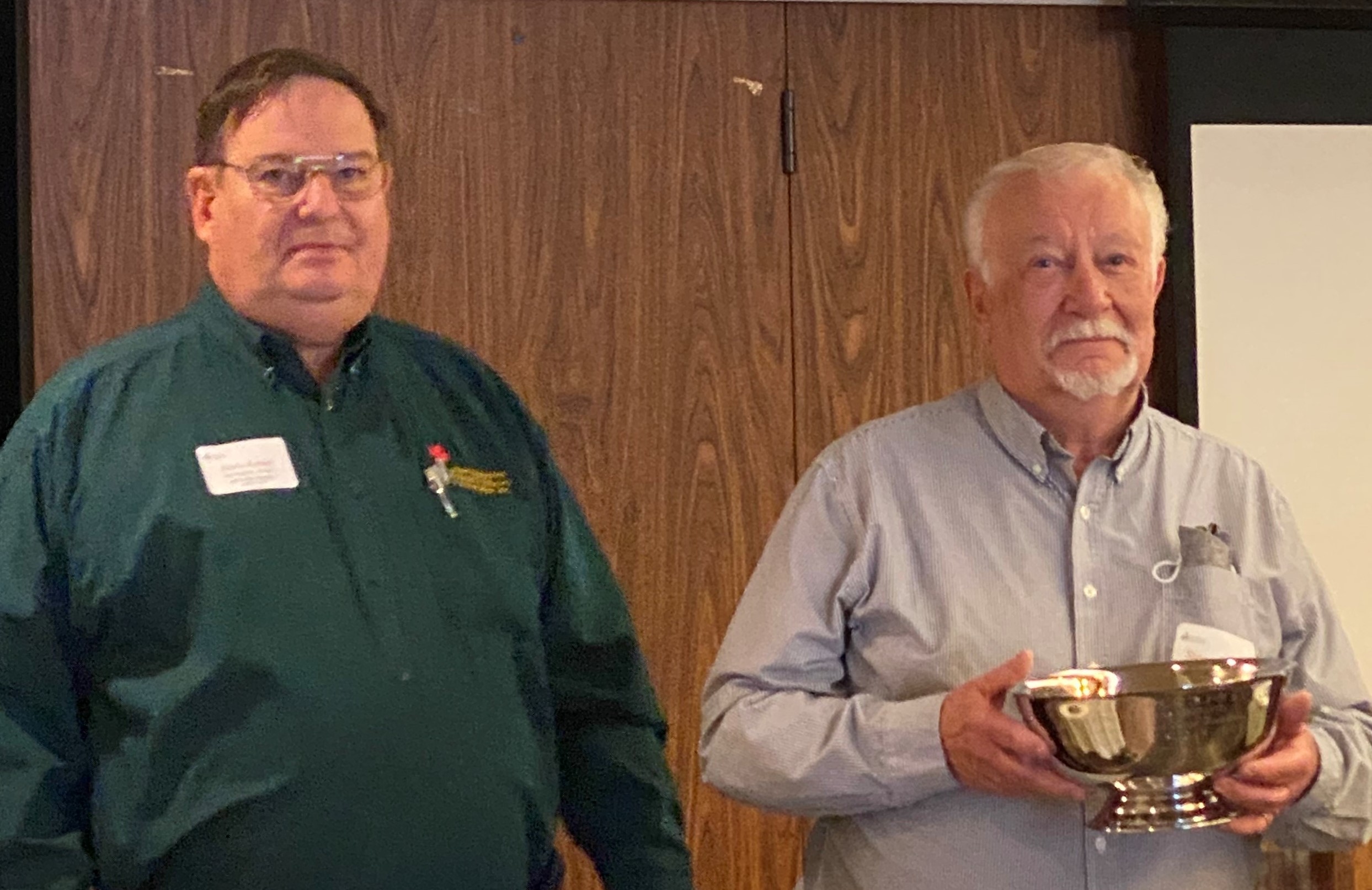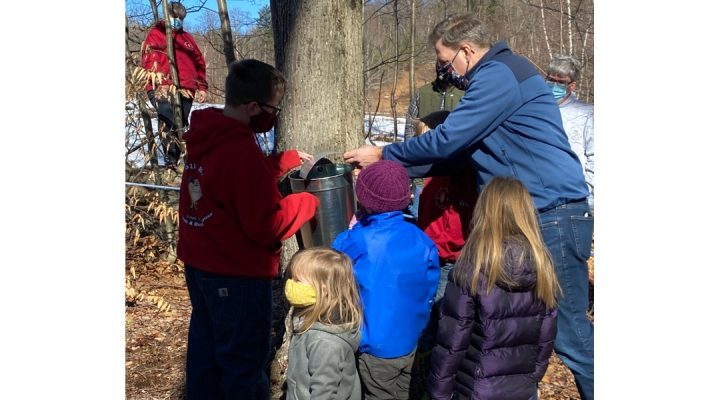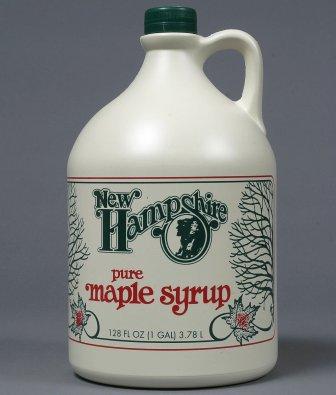Maple products are used in many areas from cooking to medicinal research
When most people think of maple syrup, they think of the sweet substance that goes on top of their pancakes or waffles. But did you know maple syrup is used in many more ways than just a way to sweeten your breakfast? In its chemistry, range of products, and range of uses maple is shown to be a highly versatile food.
To start, maple syrup is versatile in that it comes in many different variations. Maple syrup comes in four different grades each with its own unique flavor and color. These grades are: Golden – Delicate Taste, Amber – Rich Taste, Dark – Robust Taste, and Very Dark – Strong Taste. These different grades depend on the amount of time the sap is spent in the evaporator and the time of the maple season that the sap is collected. Lighter grades with their sweet and delicate tastes are better as a garnish such as topping your pancakes, yogurt, or ice cream. The bolder maple tastes of darker grades are less palatable for most people and are used more for cooking purposes. However, the best grade is the one you like most!
Maple is not confined just to syrup. Maple sap can be turned into a host of different maple flavored products. In addition to maple syrup, sugarhouses will often make products like maple candies and maple cream or butter. Maple flakes and maple sugar can add maple flavor to recipes in which they are used. Specialty items such as maple flavored condiments, coffee, granola, and others add a maple taste to well-known food items too. Even maple water, which is purified sap from the maple tree, is gaining popularity as a functional beverage similar to coconut water. These are just a few examples of the products that can be made from maple.
Maple offers many options when it comes to cooking. Due to its unique flavor, it can enhance the taste of well-known dishes or be the feature taste in a dish or bake. Maple can be used to create rubs or glazes for meats like beef, chicken, seafood, and more. Some examples include Maple-Miso Baby Back Ribs and Maple-Ginger Buttered Salmon. Being a natural sweetener, maple syrup and other maple products are often used in baked goods or desserts. Its versatility makes it appealing in simple bakes like Maple-Blueberry muffins as well high-quality desserts like Maple Forest Cake or Maple Sugar Canalés. Maple’s use in cooking extends to many other options like alcoholic and non-alcoholic beverages, soups and stews, snacks, breakfast items, Barbecue, and so much more.
Maple is used in cuisine around the world, including Japanese food. While this may seem like an unexpected pairing, maple contains aromatic compounds that are found in smoked products often used in Asian cuisine. This makes it a pleasant pairing for Japanese foods. Chefs of different expertise are seeking maple more and more in their cooking. Restaurant chefs, pastry chefs, bakers, mixologists, chocolate makers, and others are fond of maple’s many qualities and incorporate it into their culinary creations. Check out our Recipes page for ideas for using more maple in your cooking!
100% pure maple syrup is natural, unrefined, sterile, gluten-free, vegan, with no artificial colorants, flavorings, or preservatives. It contains 100 essential nutritional compounds including vitamins, minerals, amino acids, phytohormones, and 67 polyphenols. No wonder maple syrup is the subject of scientific research in labs at home and around the world.
For the health-conscious consumer another of maple’s attributes is its health benefits potential. A 60 ml (1/4 cup) portion of maple syrup provides 72% of the daily nutritional requirement of manganese, 27% of that of riboflavin, 17% for copper, and 6% calcium. It’s considered a source of calcium, a good source of copper and an excellent source of riboflavin and manganese. Laboratory research in a variety of cell and animal models has revealed that maple syrup has several compounds that may help on several areas affected by chronic inflammation. These include metabolic syndrome, brain health and liver disease, as well as maple’s emerging link to healthy gut microbiome. These findings remain to be validated and confirmed in human clinical studies.
Athletes have also found maple to be a natural source of energy because it provides simple carbohydrates, which easily breakdown into glucose. People like these, with active lifestyles, eat or drink maple products in some form (and there are many) before, during, and after exercises. This being said, it is important to remember that maple syrup does have a high sugar content. When choosing a sweetener of moderate use, it appears that 100% pure maple syrup has more healthful compounds compared to other sources of sugar. However, it is important to use it in moderation. Drizzle, don’t guzzle, as maple researchers like to say.
The versatility of maple may also extend to medicinal uses. Researchers at the University of Rhode Island have investigated maple and its parts as potential nutraceuticals and dietary supplements. A nutraceutical is a food that contains additives beneficial to health or for medicinal purposes. Research, led by Dr. Navindra Seeram with the financial support of the Québec Maple Syrup Producers (QMSP), has revealed that Native Americans used various aspects of the maple tree for medicinal purposes hundreds of years ago. Convinced that this was a lead to be discovered QMSP asked themselves, “Why don’t we try the same?” So, in recent years Dr Seeram and his team have taken a holistic approach to studying the maple as a whole and discovered its full potential.
One of these is Maple Syrup extract (MSX). It is an extract of the 100 bioactive compounds identified in maple syrup without the sugar part. The MSX is derived from industrial grade maple syrup that is classified as a “buddy” taste and is not palatable for consumption making it a by-product of the industry. This type of syrup is ideal for producing MSX and making a value-added extract that can be introduced into many formulations to enrich a food, or as a plant supplement similar to supplements such as tea extract or cranberry extract.
Bioactive compounds have also been discovered in the leaves of red maple trees that can help protect the skin from wrinkles, inflammation, and dark spots. Researchers are investigating whether these cosmetic benefits found in maple could lead to the formation of a more natural “plant-based Botox” for skin care.
Discovered in 2011, a unique, polyphenolic molecule in maple syrup, Quebecol is a natural compound that forms in maple syrup during the boiling process. It has an exoskeletal structure similar to Tamoxifen, which is a drug known to treat certain forms of cancer. Although more research is needed, the synthetic molecule of Quebecol and its analogue, isoquebecol (synthetized by Dr Normand Voyer of Laval University) have demonstrated their ability to decrease the production of inflammatory mediator and may have potential pharmaceutical uses.
About Real Maple: Real Maple is the only natural sweetener made from one botanical ingredient – maple sap – with no added colors or flavors. 100% pure maple syrup is a natural sweetener that contains vitamins and minerals that help maintain and support a healthy body. Real Maple truly is The Smarter Sweetener. Keep up with Real Maple on Facebook and Instagram (@userealmaple) for nutrition information, fun facts, recipes, and more!

